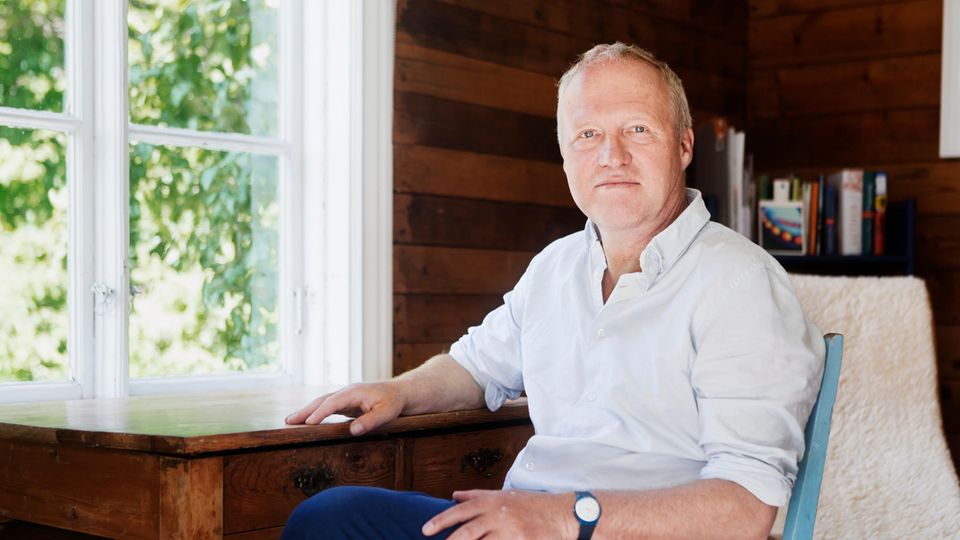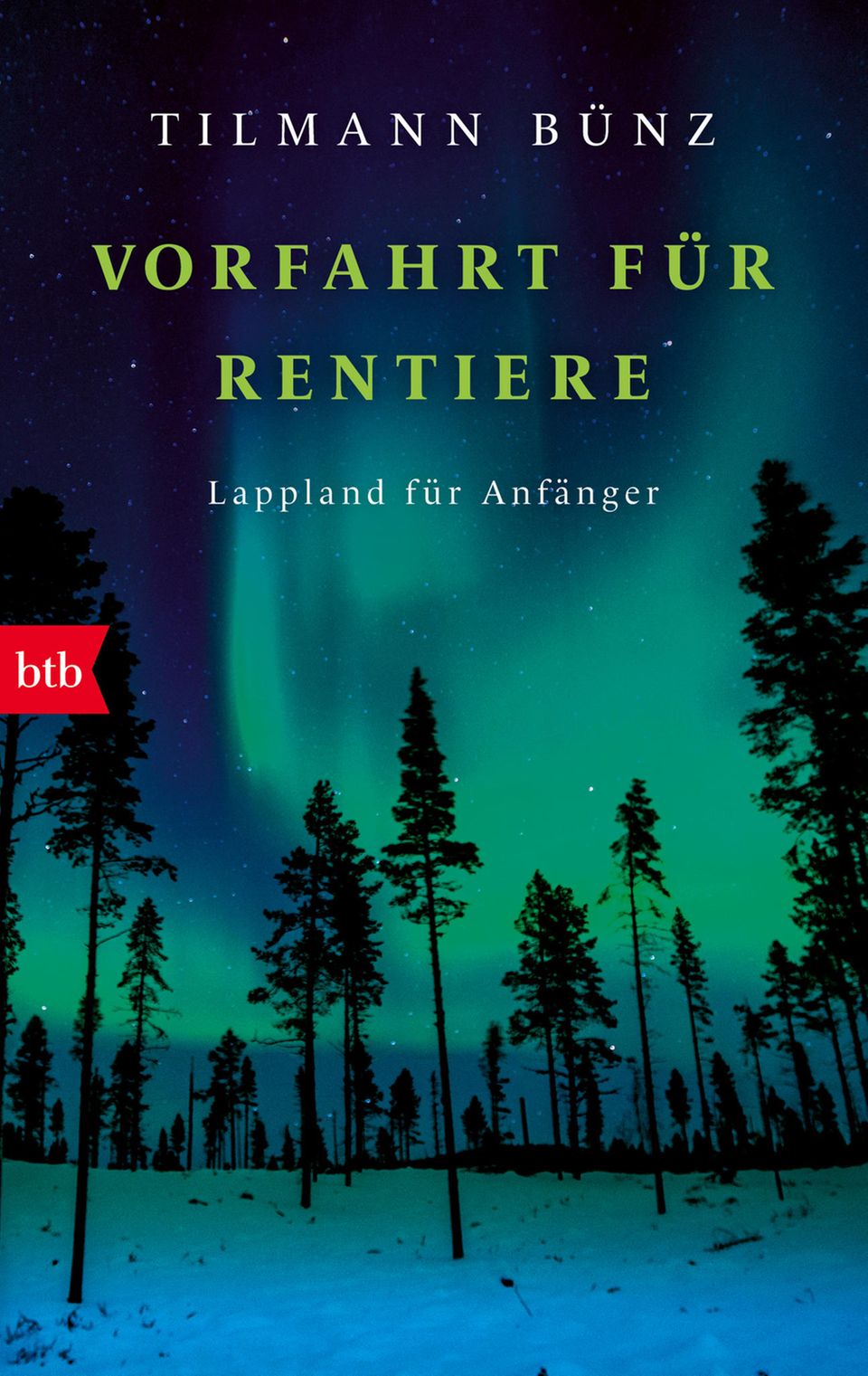interview
Sami
Reindeer herding tradition: How the natives of northern Scandinavia live today – and what travelers should know
The indigenous people of northern Scandinavia traditionally live from reindeer herding
© Imago Images
The indigenous people of northern Scandinavia inhabit parts of Sweden, Norway, Finland and Russia. The Sami have their settlement area in the Lapland region. Journalist Tilmann Bünz explains in an interview what we can learn from the Sami.
Journalist and filmmaker Tilman Bünz worked as a correspondent for ARD in Scandinavia from 2002. This was a dream come true for him. Even as a boy he wanted to live in Sweden: things seemed better there. There were no races on the highways. In nature, everyone’s rights applied and there was the beautiful word “folkhem” where everyone could feel safe, is how Tilmann Bünz describes it. When he meets a Sami woman, he encounters inequality in Sweden and his curiosity for the first time for the Sami, the indigenous people Northern Scandinavia, is awakened. What we can learn from the indigenous people of Lapland and what travelers should keep in mind when dealing with them.
In your book “Right of Way for Reindeer” you reveal that the story of a special woman is behind your fascination with Lapland.
The Sami woman Victoria Harnesk made it onto the cover of a homeless newspaper in Stockholm in 2003. She was pictured there in the traditional Sami costume with the line: “Here I can wear my traditional costume. Unlike in the mining towns of my homeland.” That made me curious – discrimination, of all things Sweden? She lived on Lidingö at the time, very close to us, and after a few cups of coffee we made a kind of pact that still exists today. We document her life with the camera and, as a cultural ambassador, she conveys what you should know about her people.

Tilmann Bünz was ARD’s foreign correspondent for Northern Europe and today works as a documentary filmmaker and travel writer. For his book “Right of Way for Reindeer” he traveled to Lapland in every season and learned a lot from the Sami.
© Sara Arnald
Victoria Harnesk is now the editor of “Samefolk”, the most important Sami magazine, and knows both worlds: urban life as well as the traditional world of reindeer herders. When she longed for home, she went Stockholm to the fridge. It was full to the brim with reindeer meat from her father’s herd. I dedicated my book to Victoria because she taught me to see her country.
The Sami traditionally live from this Reindeer herding. What else makes up the northern Scandinavian natives may be unknown to many people. What do I need to know about the Sami?
To put it somewhat bluntly: the Sami people were somewhat luckier than other indigenous people. The Inuit in Greenland, for example, have endured a horrific history of forced relocation and loss of income. I also spent a lot of time in Greenland, and that is a different fate than that of the Sami. Historically, the Sami have also been wronged – here there was expulsion and a kind of apartheid. Sami had to go to special schools, sleep on the floor and not eat with a knife and fork. Victoria’s grandmother lived to see this. Their language was frowned upon. The state even took the right to sterilize Sami women at will.
But in the last 20 to 30 years, the Sami have experienced an incredible political and cultural revival – thanks to a non-discriminatory education system. Today they are a vital and growing minority. There are very many well-educated Sami today.
Does traditional Sami culture still have a place in modern Sweden?
Today, the majority of Sami people work – contrary to how we Western Europeans might imagine the lives of native peoples – in very different professions: from novelist to mechanic to lawyer. And of course they live with central heating and broadband internet.
The Sami have some privileges in Sweden – for example the right to keep and slaughter reindeer. This is forbidden to the rest of Swedes. Anyone who keeps reindeer needs a lot of space because the reindeer have to wander and cannot stand in a pasture. This means that the Sami have very large areas of land at their disposal. So there are also Sami who still live from the traditional source of income of the indigenous people – around one in five of a total of around 20,000 Sami in Sweden. The ancient rights of the Sami are always a topic of discussion in Swedish society. These privileges are a thorn in the side of many Scandinavians because society is strongly influenced by the idea that everyone is equal and that no one should have privileges.
To what extent are the Sami seen as part of the majority society in Scandinavia today?
So it’s definitely enough to get the majority in a popular vote with the Sami song in the Grand Prix preliminary round. The Swedish royal family also emphasizes that it is important to learn from the Sami and, for example, to appreciate their handicrafts. The Sami have many admirers. But the indigenous people are also a projection surface – the Swedes have an idea of how the natives should live, and it doesn’t suit them if the Sami don’t fulfill this idea.

Tilmann Bünz: “Right of way for reindeer. Lapland for beginners”btb Verlag, 304 pages, 12 euros
© btb Verlag
How sustainably do the Sami live?
Since climate change in the Arctic is progressing four times faster than here, the Sami are also a kind of early warning. Victoria Harnesk has also repeatedly conveyed this to us.
The Sámi are very sustainable in their interaction with nature and reindeer. When a reindeer is slaughtered, everything is used by the animal, and if Sami live traditionally and have lived in one place, they leave very little trace. That’s why the number of her admirers is growing. But because of this role model when it comes to sustainability, the Sami are also blamed for any perceived misstep. For example, if they zoom through the terrain on snow scooters instead of walking – they are particularly rejected. And it is overlooked that they do this not for pure pleasure, but to guide their flocks.
9 images
What can industrialized countries learn from the Sami?
An example: When the Sami cut down a tree, they mentally apologize to it. They process birch tubers into “Guksis” – these are wooden cups that last a lifetime. And in Germany, according to the Federal Environment Ministry, around 320,000 disposable cups for hot drinks are consumed every hour. The cup comes from Scandinavia and is refined with great energy expenditure in South Asia – coated with plastic. And it ends up in our trash in five minutes. That’s such a thing. You ask yourself which is more insane, asking a tree to apologize or throwing a disposable cup in the bin after just a few minutes.
What should travelers pay attention to when handling the seeds?
Holidaymakers should no longer use the term Lapp for the northern Scandinavian indigenous people. It is no longer desired and no longer used. Use Sami or seeds instead. Or Sami People in English. And you should never ask a Sami about the size of his reindeer herd – the answer would be a long silence. That would be like asking us for our tax returns.
Transparency note: btb belongs to the Penguin Random House publishing group, which, like stern, is part of the Bertelsmann Group.


